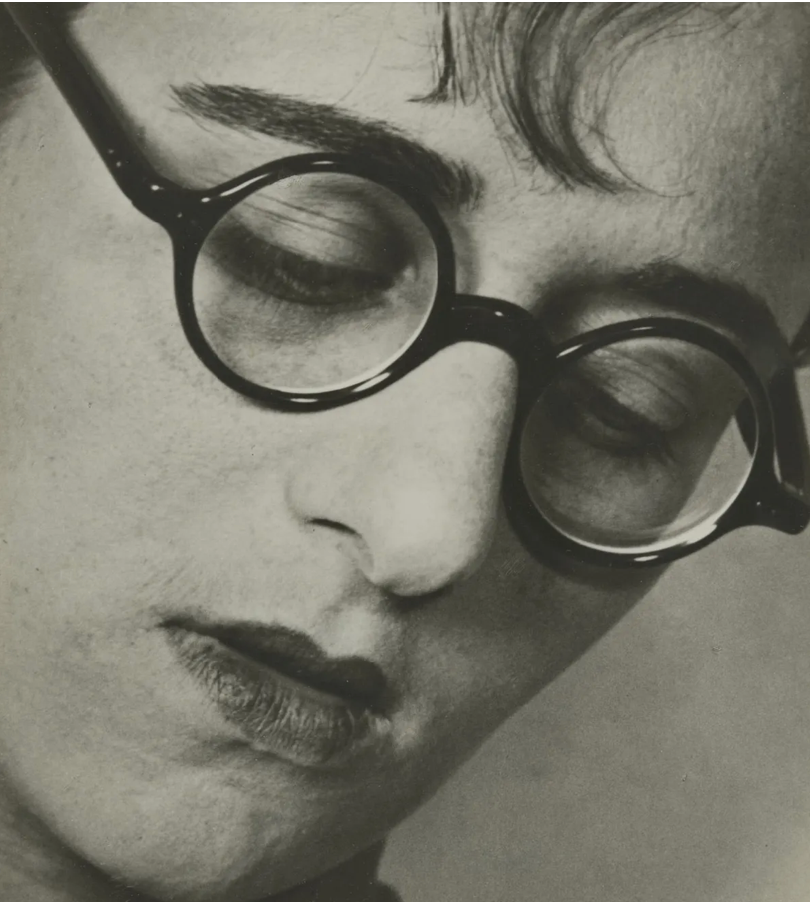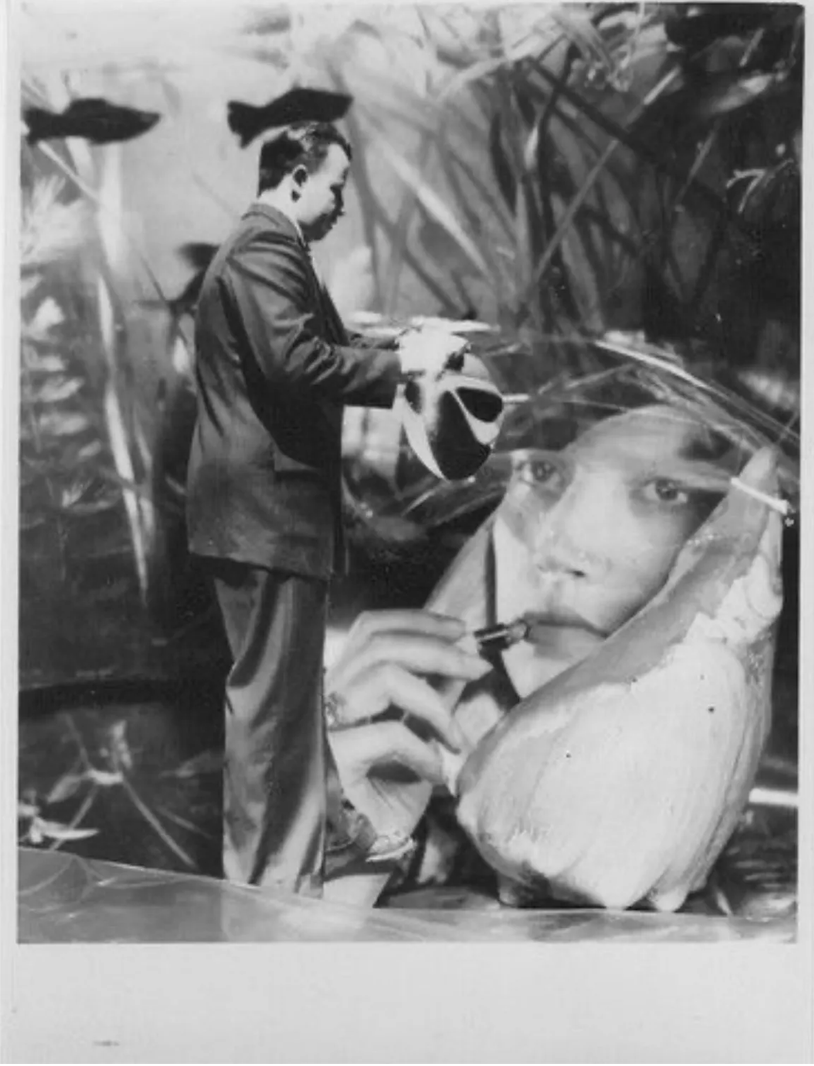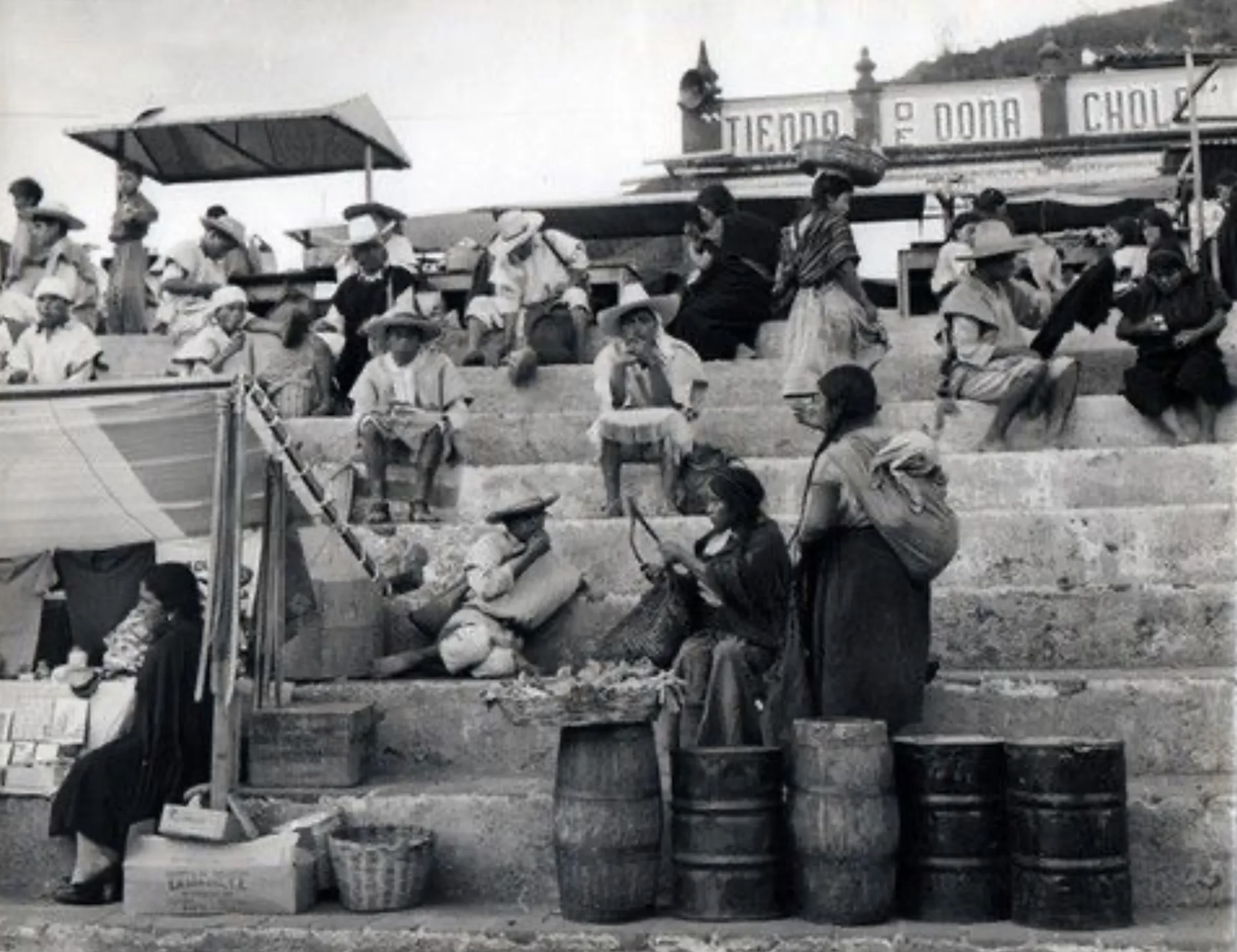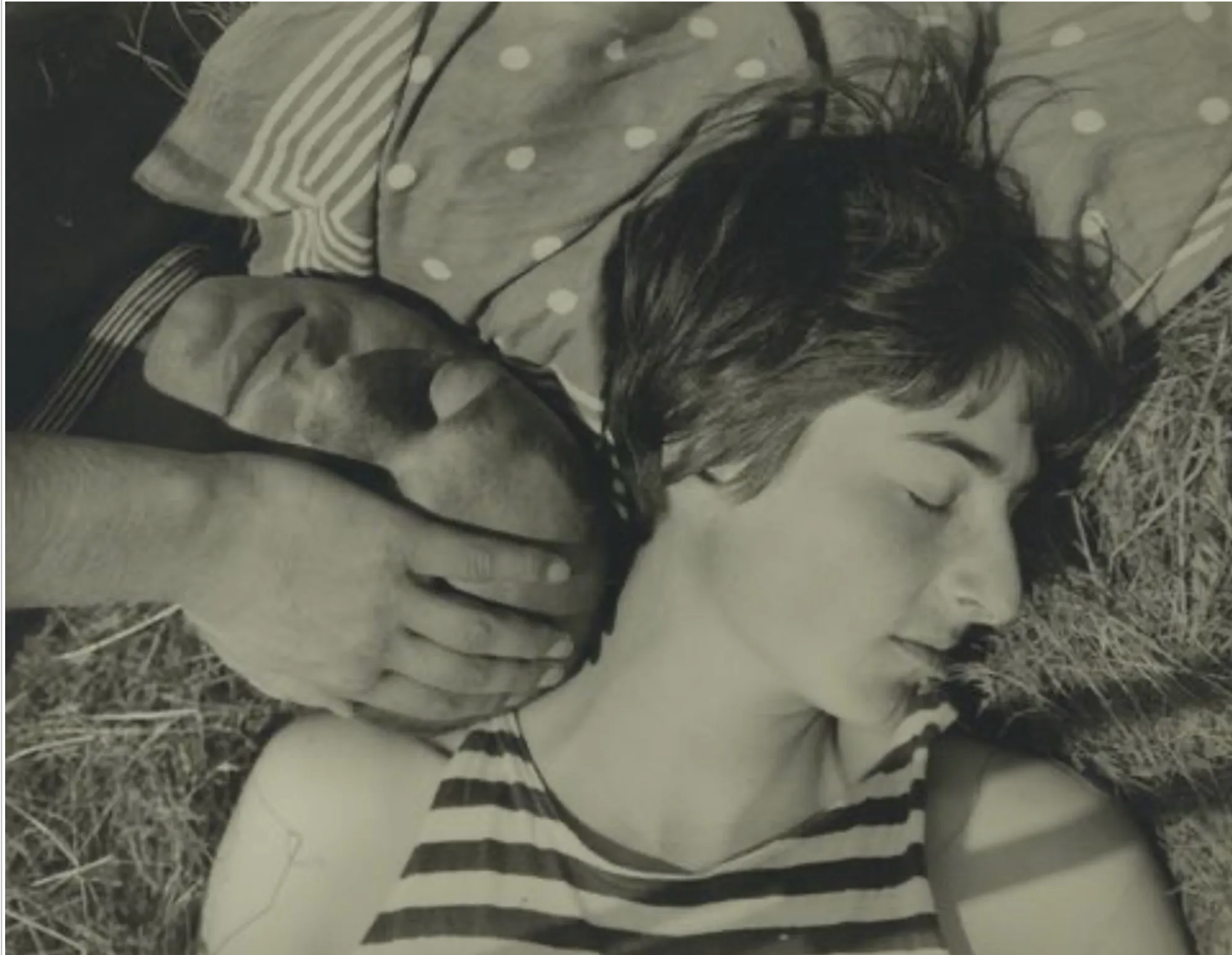The Shared New Vision of ringl + pit
Yale University Art Gallery
1111 Chapel St.
Through Dec. 7
Admission free
The sun-drenched photo could, at first glance, be a candid shot of two picnickers taking a nap on a blanket after just having eaten. But the image holds the gaze because there’s more going on. The way the man is covering one eye feels like too conscious a gesture for sleep. Then there’s the way they are arranged. Their closeness suggests personal intimacy, but they’re not lying in an embrace. Instead, they are at their own angles, on their own paths. The body language is of an uncommon relationship, one of mutual respect and understanding, but also personal freedom and autonomy, openness to possibility.
The photograph is by ringl + pit, a Berlin studio founded in 1930 by photographers Greta Stern and Ellen Auerbach that is the focus of a special exhibition, “The Shared New Vision of ringl + pit,” at Yale University Art Gallery. The show deftly sketches a collaboration between two artists full of ideas, and has a lot to say about how artists can respond to oppressive politics.
Stern and Auerbach came up with the moniker for their collaborative studio based on their childhood nicknames (the woman in the photo is Auerbach, with her husband Walter). Stern and Auerbach had met the year before at the Bauhaus school, “a cultural incubator that valued the medium of photography for transforming how artists see the world,” as an accompanying note states. “Stern (ringl) focused on the graphic elements of photography, while Auerbach (pit) provided witty and ironic touches that challenged traditional representations of women in advertising and film. They ran their acclaimed atelier during the final years of the Weimar Republic, closing its doors in 1933, when the rise of Adolf Hitler and the Nazi Party forced these two Jewish, queer, avant-garde artists to flee Germany. Though short-lived, their collaborative studio provided Stern and Auerbach an opportunity to defy the conventional notion of the individual artist and to create work ‘made completely together.’ ”
In addition to celebrating the two photographers’ work, the exhibition shows how ringl + pit captured a slice of Berlin’s famed arts world before World War II — a scene preserved and memorialized by several other artists, perhaps most famously in America by Christopher Isherwood, who was a part of it, and by Cabaret, based on Isherwood’s writing. The photos of ringl + pit, of “friends, lovers, and other experimental artists,” as an accompanying note states, lets us see some of what Isherwood was talking about. We get a flash of the brilliance, the poverty, the decadence, the exploration, the challenging of norms that in some ways is still out ahead of where we are now. No wonder the Nazis saw it as such a threat.
Evocations of the Berlin scene in the 1930s often end, as they should, in a mournful air. In slaughtering so many, the Nazis snuffed out entire cultures, including the wildly vibrant one in their own capital city. The ringl + pit show is haunted by those dead, but the choice of subject offers another angle on it that resonates just as strongly today.
In leaving Germany, Stern and Auerbach saw the writing on the wall early — 1933 was the year Hitler was appointed chancellor of Germany after a string of Nazi party electoral victories, and passed a series of laws essentially transforming Germany from a democracy to a dictatorship. Stern’s and Auerbach’s departures meant the end of their collaboration. But it didn’t mean the end of either of them making art. “Fleeing Nazi Germany in 1933, Stern eventually immigrated to Argentina where her radical approach to photographic composition flourished,” an accompanying note states. “From 1948 to 1951, she produced a series of photomontages called Sueños (Dreams) to accompany a weekly column in the women’s magazine Idilio (Idyll) that offered psychoanalysis of dreams sent in by readers. Her surreal composite images were playful yet powerful challenges to Argentine society’s traditional gender roles.”
Similarly for Auerbach, “after escaping from fascist Germany in 1933, she briefly operated a photography studio in Tel Aviv before relocating to New York with her husband, Walter Auerbach. She freelanced for Time and Life magazines and continued to travel widely with her camera. In 1955 she explored Mexico with the photographer Eliot Porter, taking pictures of local religious traditions and devotional objects.”
Today, artists find the U.S. political climate increasingly hostile for making art. On Aug. 21 the Trump administration targeted specific pieces of art in the Smithsonian it found objectionable. The New York Times on Aug. 23 reported that museums “feel a chill”; “some have already changed their programming significantly — and sometimes abruptly — as they try to steer clear of potential hot-button topics including gender, sexuality and race.” This push to control the art world comes as the Trump administration deploys the National Guard in U.S. cities.
The ringl + pit show reminds us that the chill in the art world likely doesn’t translate to artists themselves. Whether artists remain in the U.S. or leave (as some have) because they’ve had enough, they carry the ability to make art with them wherever they go. And Stern’s and Auerbach’s persistence was a form of resistance, beginning with the simple fact that they outlived the regime that almost certainly would have put them to death had they stayed. The Nazis may have driven the duo apart. But long after the Third Reich crumbled, both photographers were still out there, taking pictures. They kept their focus.









